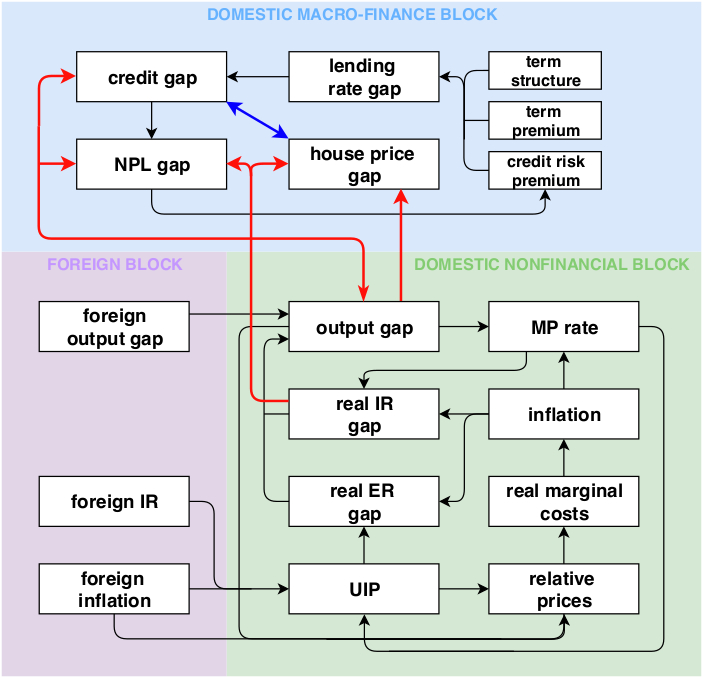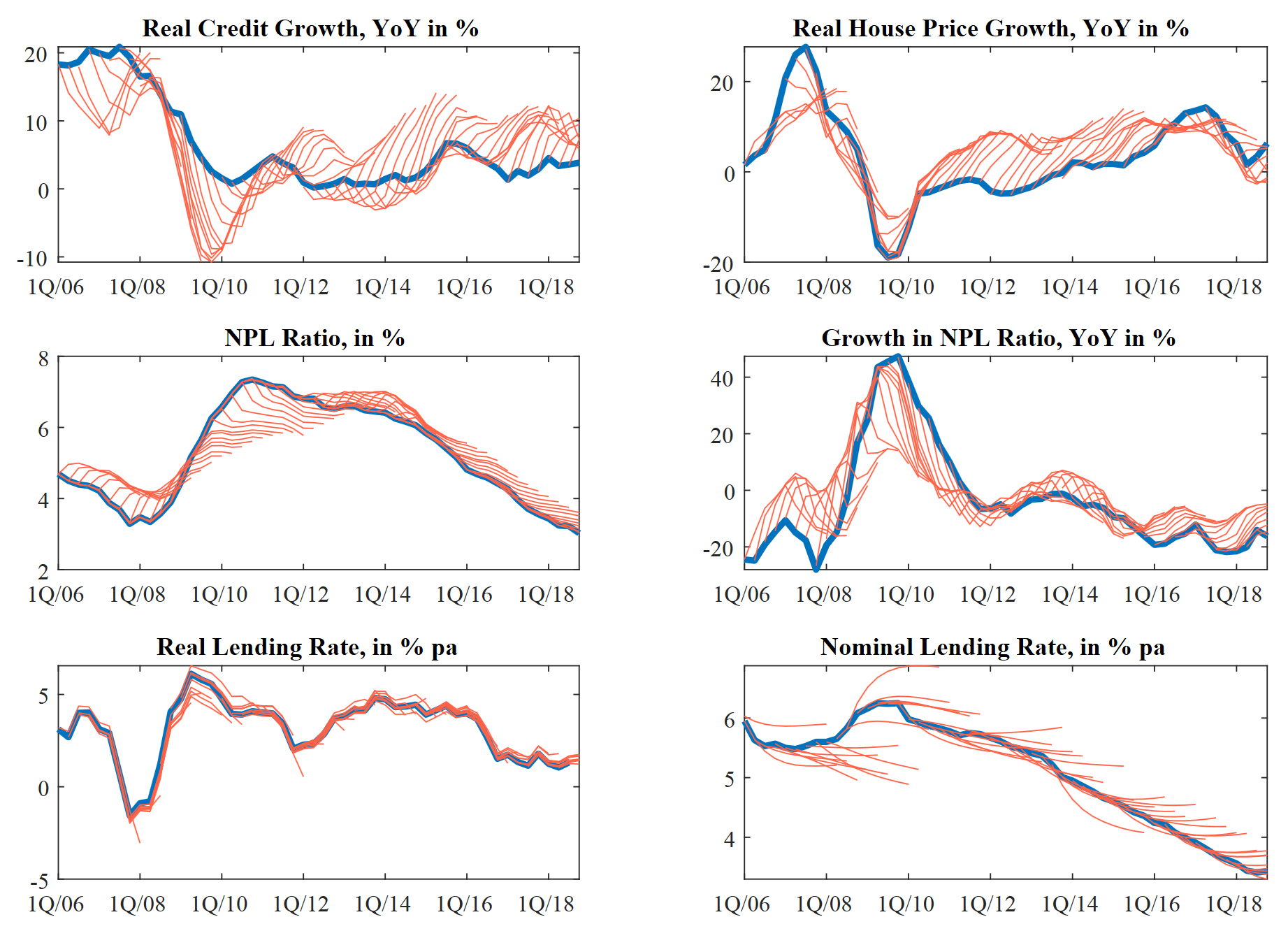How to consistently model the financial cycle?
After the global financial crisis, the demand for more comprehensive modelling of the interactions between the real economy and the financial sector increased markedly. One of the reasons was the very limited ability of structural macroeconomic general equilibrium models1 used by central banks to predict strong macroeconomic movements. This is because, at the forecasting horizon, the models tend to converge relatively quickly to their equilibrium levels. This shortcoming gave rise to a stream of literature dealing with the implementation of financial variables and financial market imperfections (financial frictions) which were generally missing from pre-crisis models. Even though this could be considered progress, low flexibility and high computational demands limited – and continue to limit – their potential to be used by central banks in practice. Moreover, no consensus has been reached on which approach is the most appropriate, while the combination of different types of financial frictions is often not possible or leads to a solution that is not applicable in central banks. Therefore, even after the global financial crisis many central banks opted to continue using their pre-crisis structural models.
In our paper Introducing Macro-Financial Variables into a Semi-Structural Model, we try to come up with a consistent but flexible tool for forecasting selected macro-financial variables of the Czech economy which would limit the shortcomings of the pre-crisis structural models and, at the same time, would be easy to use in practice. For this reason, we favoured a semi-structural model over fully structural one. The semi-structural model is more flexible while maintaining the important theoretical economic relationships. We chose the semi-structural model used by the Czech National Bank before it switched to a fully structural framework in 2008. This model has proved to match the important characteristics of the Czech economy and is thus a good starting point.
We extend this model with a set of macro-financial variables to capture aspects of the domestic financial cycle. This should strengthen the response of the domestic business cycle to certain shocks and allow us to predict the selected macro-financial variables and their turning points. We follow the definition of the financial cycle provided by Drehmann et al. (2012). According to these authors, the financial cycle is characterised by joint fluctuation of credit and house prices, higher persistence and amplitude than the business cycle, and potential “dis-synchronisation”' with the business cycle, as not all business cycle recessions necessarily coincide with financial cycle contractions. To achieve this, we extend the model with four new macro-financial variables – credit to the non-financial sector, house prices, non-performing loans and the bank lending rate. We also introduce a spiral between house prices and credit, which has been identified as a potential source of systemic risk by the Czech National Bank in its Financial Stability Reports. An essential part of the extended model is a feedback loop between the non-financial and financial parts of the economy via credit and credit risk.

Note: This scheme is a simplistic representation of the extended model. Red lines represent the relationship between the non-financial and financial block and emphasise the feedback loop between non-financial and financial variables. The blue line represents the spiral between the credit gap and the house price gap. IR = interest rate, ER = exchange rate, UIP = uncovered interest rate parity.
Model simulations, described in more detail in the paper, confirm that macro-financial variables play an important role in the transmission of shocks and in monetary policy transmission. Both real GDP and consumer prices react more strongly to selected shocks in the extended model than in one without macro-financial variables. Therefore, monetary policy also reacts more strongly in order to get inflation back on target and to close the output gap. The extended model also helps to explain both the pre-crisis boom and the following bust.
Conditional forecasts of macro-financial variables, as shown in the figure below, illustrate that the model is capable of anticipating turning points in the financial cycle. The extended model is able to capture the reversion in the growth of house prices and credit in 2008 and 2009 (the peak and the trough of the cycle respectively). The predictions capture the dynamics of house prices very well (both the directions and the magnitudes of changes). The model can also predict well the direction of changes in credit growth, the lending rate and the non-performing loans ratio. It is less precise in capturing their magnitudes, especially the magnitude of credit growth.
It should be stressed that the extended model was designed as a complementary analytical tool and not as a main forecasting model. Assuming the baseline paths of the non-financial variables from the main forecasting model are correct, it is possible to predict the probable future development of selected macro-financial variables using our extended model and to contribute to more flexible implementation of macroprudential policy.

1 In the literature, these models are known as DSGE (dynamic stochastic general equilibrium) models.